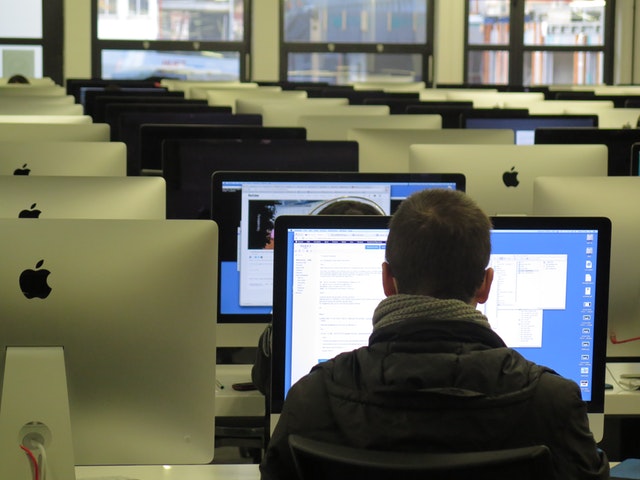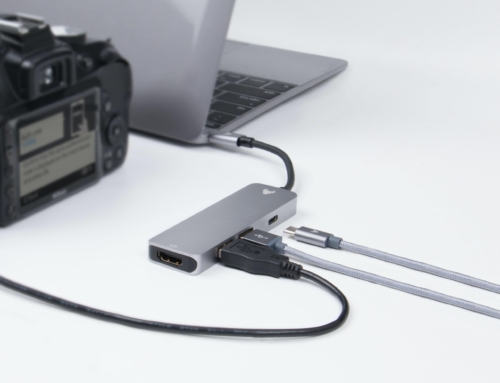“This is the beauty of Blended Learning: it allows teachers to highly customize and fine-tune their teaching method to meet their students’ unique needs.”
What Is Blended Learning?
In our previous article, we defined blended learning as, “a teaching method that combines both online educational resources with instruction from a teacher in a live classroom setting.” Unlike traditional education or strictly online programs, blended learning allows today ‘s digital natives to transition between learning in the virtual world and the physical world. As with any “blend” of two things, the proportions can make a big difference. Blended learning in your classroom may consist of a 50/50 split between online courses and live instruction, or an 80/20 mix. It all depends on your class ‘s specific needs.
Technically, there ‘s a near unlimited number of shades of blended learning, but there are a few established models which have risen to prominence in recent years. Each of these place varying levels of emphasis on live and virtual instruction and deliver them in different ways. “Which model of blended learning should I choose?” you may ask. Well, educational experts argue that it depends on your needs. Let ‘s take a look at the five most popular models of blended learning and help you determine which one is right for you.
The 5 Models of Blended Learning
Rotational-
In the rotational model of blended learning, students spend fixed periods of time either learning virtually or physically. For example, a student may spend an hour taking an online course at the computer lab and the next hour listening to a live lecture in the classroom. This model keeps online learning and teacher-led instruction separate and distinct.
With station rotation, in particular, learning activities are split up into various stations within the classroom. There, students focus on a single task, such as writing, reading, discussion, or taking an online course. By splitting up everything into stations, students are encouraged to collaborate with one another and converse. Other popular models of rotation like lab rotation and individual rotation use the same principle. Either groups of students rotate between separate labs, or individual students rotate through stations on a personalized schedule, respectively.
Flipped Classroom-
This learning model is referred to as “flipped” because it completely flips the functions of time in the classroom and time at home. Traditionally, students receive instruction in the classroom and work on projects and homework in the home (hence the name). However, with the flipped classroom model, students receive instruction and content in the home. Then, they come to the classroom to practice what they ‘ve learned and to engage in group projects.
If you ‘ve ever homeschooled your child, you ‘re likely familiar with the concept. Social interaction and team-building skills are encouraged in the classroom, while personal studies that rely heavily on reading, writing, and listening are administered in the home. This enables teachers to spend their time on more than just giving lectures but instead on engaging 1-on-1 with students.
Flex-
The Flex model gives students an extremely high degree of control over their learning path. With this model, students take online courses and conduct research throughout the majority of the day, while teachers provide instruction and guidance as needed. The purpose behind the flex model is to allow students to learn independently without leaving them completely unguided.
Self-directed or self-guided learning is increasing in popularity across schools in the United States. Proponents of self-guided learning believe that allowing students to pursue their own interests and passions are more effective than traditional education, which depends on a “one-size-fits-all” curriculum. Wozniak himself has even encouraged self-guided learning and attributes it to his personal success in tech.
A La Carte-
The A La Carte model is already quite common in traditional universities who offer both physical and online programs. For a student who is unable to attend a course due to time constraints, he or she is able to take the course online in addition to their existing coursework. For high schools, this allows students to take AP (Advanced Placement) courses or study topics that wouldn ‘t be available otherwise.
Additionally, the A La Carte model allows schools to pit online education and traditional education against each other to see which is most effective. If it turns out that certain subjects or classes are more effective when delivered online rather than in-person—or vice versa—adjustments can be made by the school. This model also retains all of the facilities of a traditional school and is equipped with a full staff, including guidance counselors, to advise students.
Enriched Virtual-
Of all the models of blended learning, the Enriched Virtual model depends most heavily on online courses. Instead of attending daily classes, students who participate in enriched virtual learning receive the large majority of instruction and content online at home and periodically attend live sessions with a teacher. A student may attend class twice a week or once a week depending on the school.
Like the Flipped Classroom model, most homeschoolers are probably familiar with this model. Online courses form the basis of the Enriched Virtual model and add live instruction as a supplement.
Which Model Is Right for My Classroom?
As a teacher, you know the specific needs of your class better than anyone else. While we would love to recommend one model over the other, it all depends on a case-by-case basis. This is the beauty of Blended Learning: it allows teachers to highly customize and fine-tune their teaching method to meet their students’ unique needs. It also allows teachers to spend less time on lecturing and more time on mentoring and delivering personalized attention to each student. And, it gives educators more time to change lives. Isn ‘t that why we got involved in education in the first place?
We hope that you enjoyed this article and that you found it of benefit to you and your students. If you’re interested in learning how Woz U encourages blended learning at traditional universities, check out our upcoming series on “Powered by Woz” schools.





